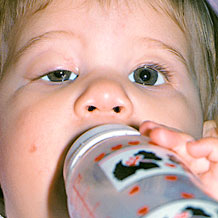 What it is:
What it is:
Ptosis (TOE-sis) is a drooping of the upper eyelid. It can block normal vision. Ptosis can be present in children or adults.
What You Need To Do:
All children should have regular eye exams by an ophthalmologist (Insight Eye M.D.). If your child has ptosis, you should visit your doctor more frequently.
Why It’s Important:
Childhood ptosis can cause amblyopia or “lazy eye.” Amblyopia is poor vision in an eye that does not develop normal sight during early childhood.
Symptoms
The most obvious sign of ptosis is the drooping lid itself. Ptosis can affect one or both eyelids. It may be present at birth (congenital) or occur later in life.
In congenital ptosis, the upper eyelid creases may be uneven with one another. You may notice your child often tipping his or her head back to see underneath the drooping eyelid. He or she may try to lift the eyelids by raising his or her eyebrows. These head and facial maneuvers are signs that the child is trying to use both eyes to see. Abnormal head positions like this could cause serious neck problems.
Treatment
Surgery can treat ptosis by tightening the levator, or eyelid-lifting muscle. In severe ptosis, when the levator muscle is extremely weak, the lid can be attached to or suspended from under the eyebrow so that the forehead muscles can do the lifting.
Immediately after surgery, it may be difficult to completely close the eye, but this is only temporary. Lubricant eyedrops and ointment are helpful during this period.
Although surgery usually improves the height of the lid, both eyelids may still not appear perfectly symmetrical. In some cases, more than one operation may be required. In rare cases, full eyelid movement does not return.
If amblyopia, or lazy eye, is present, treatment with patching, eyeglasses, or eyedrops may also be necessary.
Tests/Diagnosis
Your Eye M.D. may use blood tests, x-rays, or other tests to determine the cause of the ptosis and plan the best treatment. The most common treatment is surgery. Sometimes a small tuck in the lifting muscle and eyelid can raise the lid sufficiently. More severe ptosis requires reattachment and strengthening of the levator muscle.
In determining whether or not surgery is necessary for a child, your Eye M.D. must consider the child’s age, whether one or both eyelids are involved, the eyelid height, the levator muscle’s strength, and the movements of the eye.
Causes/Risk Factors
Congenital ptosis is often caused by poor development of the levator muscle that lifts the eyelid. Although it is usually an isolated problem, a child born with ptosis may also have eye-movement abnormalities, muscular diseases, lid tumors or other tumors, neurological disorders, or refractive errors. Congenital ptosis usually does not improve with time.
The most common cause of ptosis in adults is the separation or stretching of the levator muscle tendon from the eyelid. This process may occur as a result of aging, after cataract surgery or other eye surgery, or as a result of an injury.
Adult ptosis may also occur as a complication of other diseases involving the levator muscle or its nerve supply, such as neurological and muscular diseases and, in rare cases, tumors of the eye socket.

